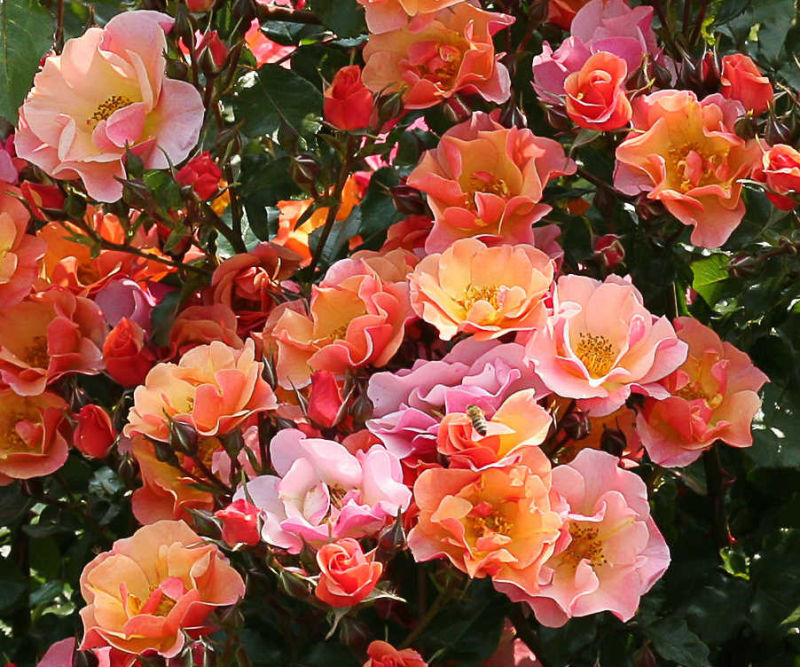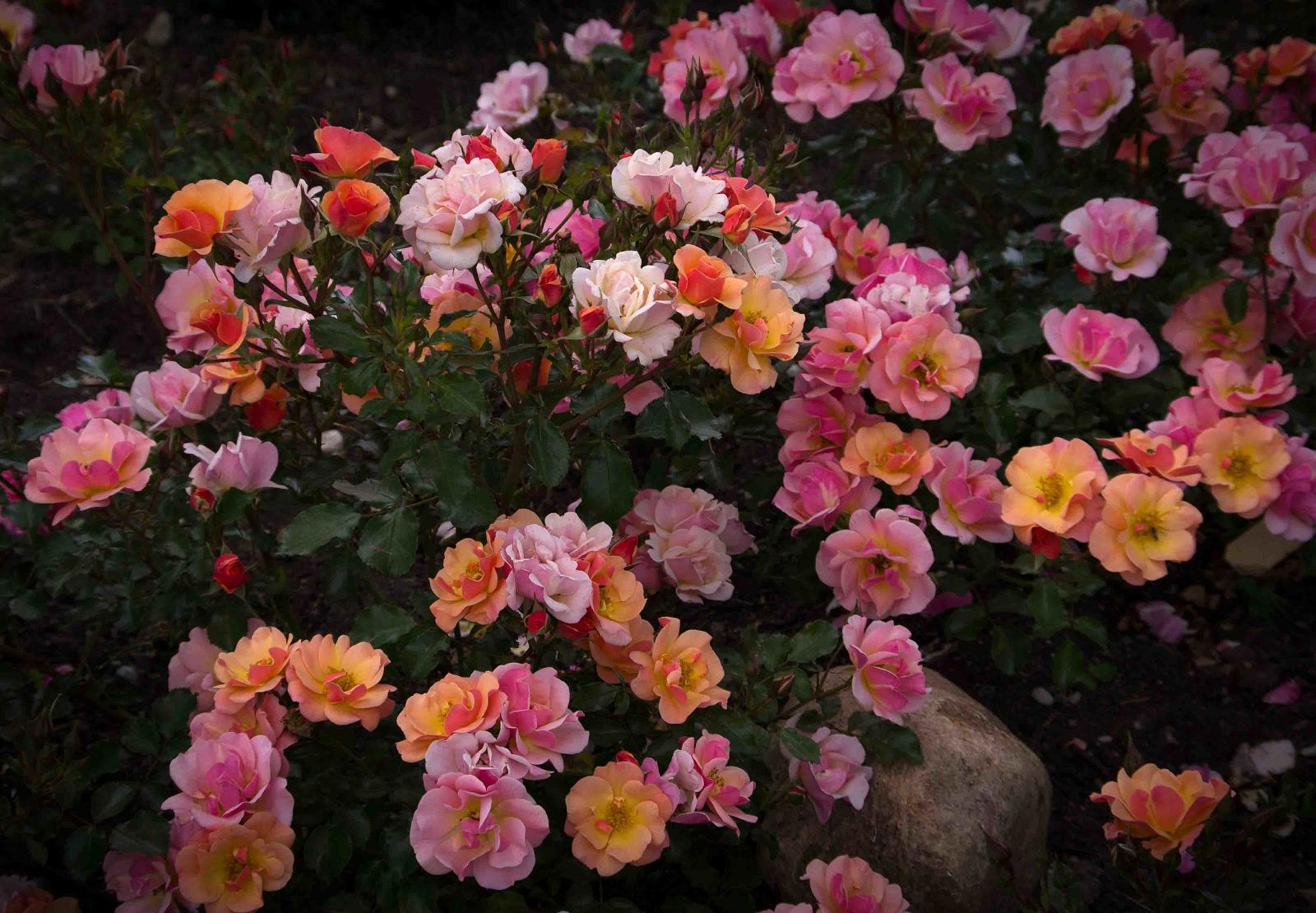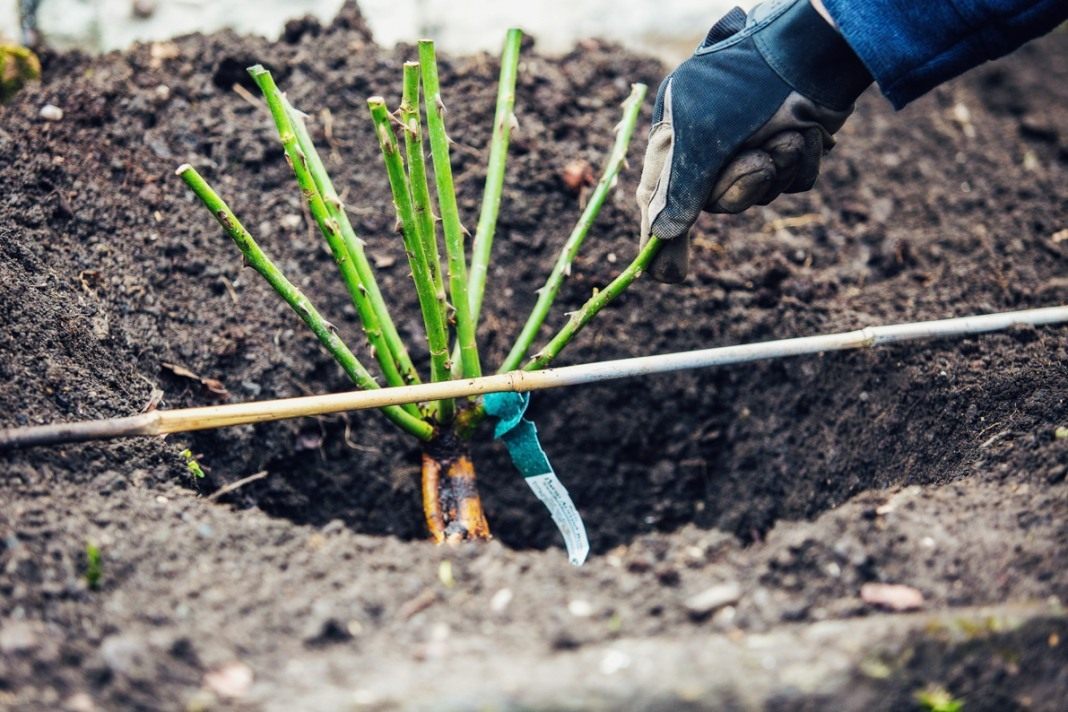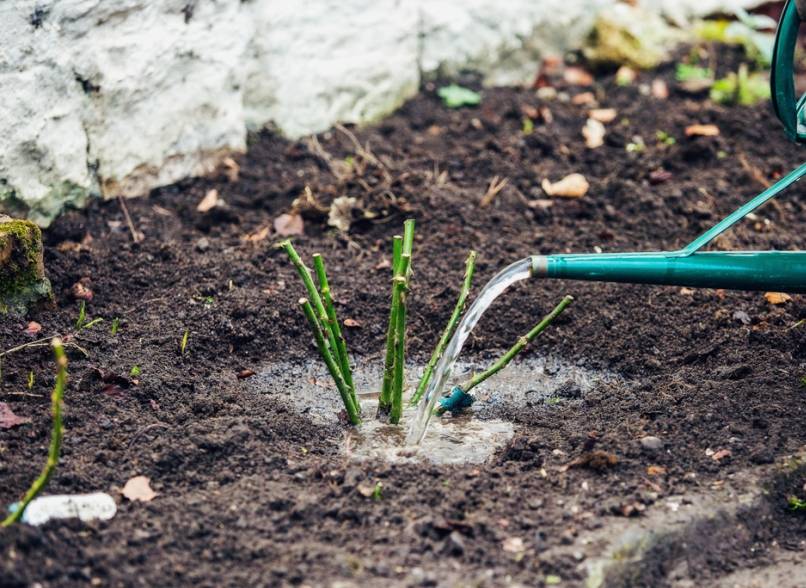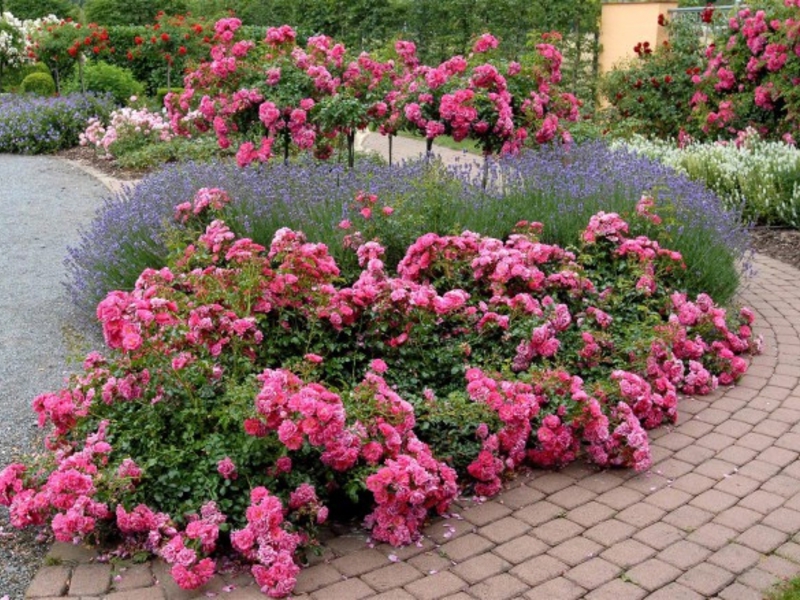Content:
Climbing roses are climbing plants of amazing beauty. They are widely used in vertical landscaping to create cascading cascades. They can be safely used to decorate a gazebo, garden, public park areas, loggias and other objects. Rose Jazz is a bright representative of climbing roses.
The history of the creation of the variety
Rose Jazz is one of the young varieties of ground cover plants from the rose family. Bred by German breeders in 2003. Despite its youth, the plant has already won a decent number of world awards and prizes.
Characteristics and features of the variety
The description includes the characteristics and characteristics of the variety.
Frost resistance
Excellent frost resistance makes this rose variety in demand among Russian flower growers. For example, he feels great in the winter in the Moscow region. Rose is not afraid of freezing, she quickly recovers. In general, the Jazz rose is weather-resistant.
Bloom
The rose blooms all season, without interruption. The number of flowers on the stem can reach 10. The flower itself is small: 3 to 4 cm in diameter.
At the beginning of the blooming process, the buds have a bright orange-copper color. As the bud opens, it becomes peachy. In both versions, the rose is good and fulfills its decorative function.
Hive options
Jazz rose looks like a shrub with a huge number of bright small flowers. The bush can grow up to 70 cm in height.The width is about 45 cm.
Growing features
The Jazz variety is easy to care for, as it does not require constant pruning and feeding, unlike other varieties of ground cover roses.
Landing
Before planting, seedlings require pruning up to 25 cm, as well as vitriol treatment to increase the vitality of the plant in a new place.
Before planting, the soil mixture is prepared in advance. It consists of equal volumes of garden soil, turf, sand, clay, peat, humus. Superphosphate and ash are added. At the bottom of the hole, bird droppings are placed in a ten-centimeter layer. The seedling is placed in a hole formed from the soil. Tamp the earth, water, sprout the sprout. It is desirable to provide partial shade for the future plant.
Care
Climbing rose Jazz is not particularly capricious in leaving. Young bushes need to be watered regularly as the soil dries out. It is enough to water adult plants once every 9 days. It also depends on the climate, weather conditions. Morning watering with warm water is recommended. It is better to underfill than to overflow the plant. Excessively moist soil can cause rotting of the root system and death of the plant.
Fertilization is carried out systematically. In spring, nitrogenous fertilizers and organic matter are used. When buds are formed, potassium and sodium supplements are used. At the end of flowering - phosphorus or potassium fertilizer. Top dressing before winter is done in the second half of August and the first half of September. Scheme: initially organic fertilizer is applied, after two weeks - phosphorus-potassium, after 10 days - potassium sulfate.
The plant does not need frequent pruning. It is enough to cut a little at the ends in the first year. In subsequent years, you just need to remove dry branches and thin out the bush a little to maintain shape. The distance from the kidney should be observed - 1 cm.Slices, in order to avoid infection, are processed with garden pitch. The bush must be treated with Bordeaux mixture.
Reproduction
Rose Jazz - ground cover, reproduces by shoots. At the beginning of March, you can already cuttings: a long shoot is taken and attached to the ground with an ordinary hairpin. The extreme buds are necessarily above the ground. The shoot is located in the hole. One bud must point downward for the new plant to take root. New shoots appear from other buds. Regular watering is required for newly appeared cuttings. After rooting young seedlings, they can be moved to another place for full germination.
Advantages and disadvantages of the variety
Jazz rose has the following advantages over other varieties:
- Continuous flowering throughout the season;
- Resistance to many pests, diseases;
- Calmly withstands cold winters;
- Constant pruning of the plant is not required;
- Unpretentious care;
- Self-shedding those buds that have already bloomed;
- Looks great in any landscape design. This can be the life of flowerpots on the street, flower beds, parks or a garden plot.
The variety also has some disadvantages:
- Susceptibility to diseases such as powdery mildew, leaf spot;
- The need for frequent pruning;
- Rose Jazz has thorny thorns that get in the way during pruning;
- When planting, it should be borne in mind that the plant does not develop well in the shade.
Rose Jazz - one of the varieties of climbing roses, often used to decorate the garden, premises. The plant is unpretentious in care. Despite this, she needs to pay attention: water, feed, pruning in a timely manner. A small amount of time and effort spent will certainly pay off: the cascading cascades of roses look amazing.
